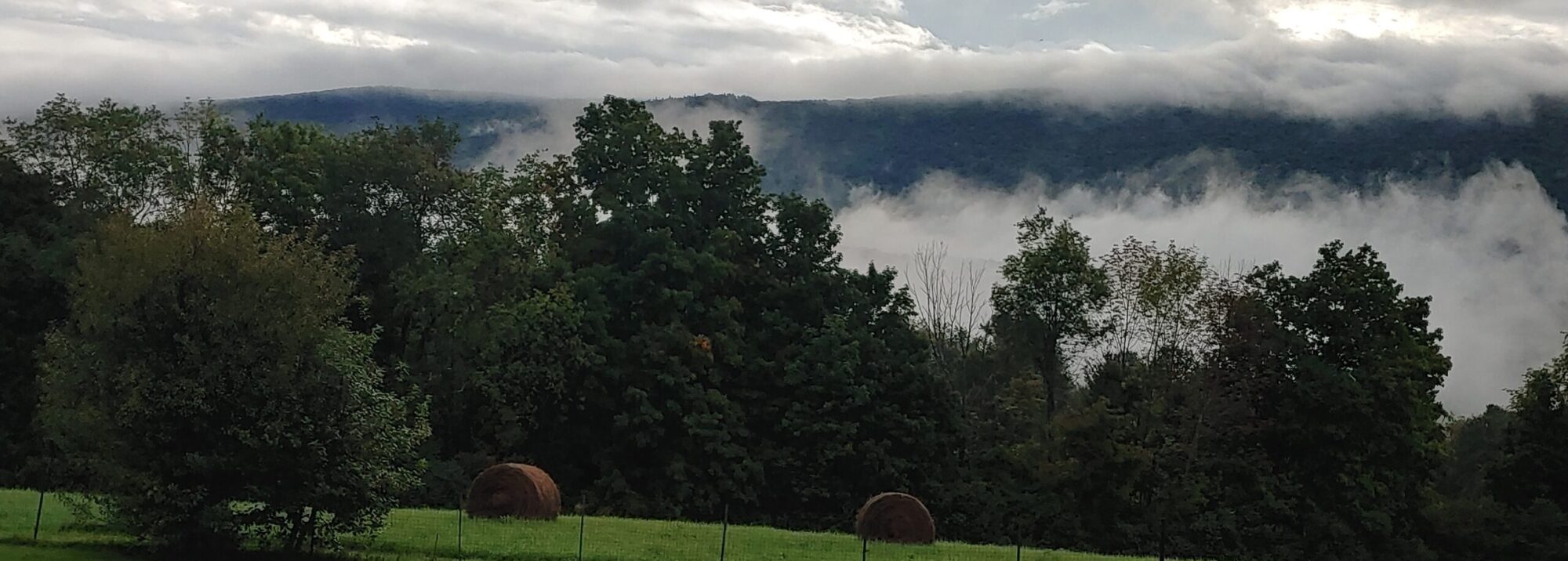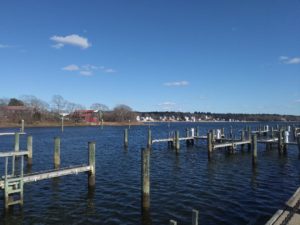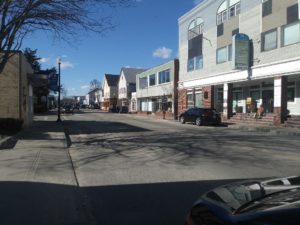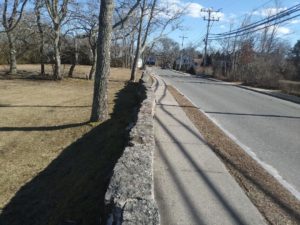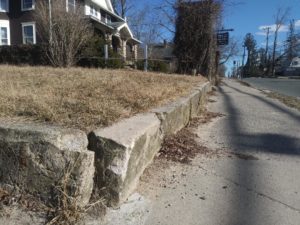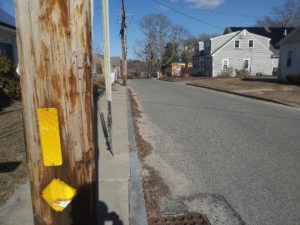If I speak in the tongues of mortals and of angels, but do not have love,
I am a noisy gong or a clanging cymbal.
And if I have prophetic powers, and understand all mysteries
and all knowledge, and if I have all faith,
so as to remove mountains, but do not have love,
I am nothing.
I Corinthians 13:1-2, NRSV)
(Paul wrote these words to those who gathered in Corinth in the name of Jesus Christ. There were debates about whose gifts were most valuable.)
There’s a drain pipe that carries rainwater from the Daffodil Hill to the Cocheco river over twenty feet below. It’s buried on the top and ends at river level a few hundred feet away. It’s supposed to be buried here, too, but the ground around the drainpipe has been eaten away by floodwaters. A wedge of land is gone, leaving a hole and the exposed pipe, making a hiding place for the frogs.
Seeing the hole from the yard above is tricky. The water eroded soil from the bottom up, leaving an overhanging layer of dirt only a few inches thick. There are plants growing on the edge, along with moss, making it hard to see where solid ground ends and the overhanging dirt shelf begins. At first glance, it all looks the same – the solid ground that supports the abundant life above and the dangerously thin dirt that cannot hold more than the lightest of plants. Without support, without terra firma, it will crumble, revealing the empty space beneath.
Is that what Paul was writing about? No matter what the gifts are, no matter what the talents or treasures, it all comes crashing down if there is no love beneath it. Without a grounding in love, everyday life will eat away at our talents and works, making a hole we may not even see until we’ve already fallen in. Nothing planted can thrive if the ground is hollowed out beneath it – and we are no different. Our outer lives can sustain nothing if we our inner lives are eroded, eaten away beneath the surface. One day, we wake up and think, “I am nothing.” All for lack of sustaining love.
How can we tell if our outer lives are planted in firm soil, or if they’re barely surviving in a few inches of dirt? We can pause, slow down, stand in one place. We can look and listen, feel the ground underneath our feet. Paying attention and being still give us a chance to take a closer look at all the things on life’s surface. Then we can answer two questions:
Is my life sustained by love, green and growing?
Is my life lived on a thin layer, lacking strong roots, barely hanging on?
